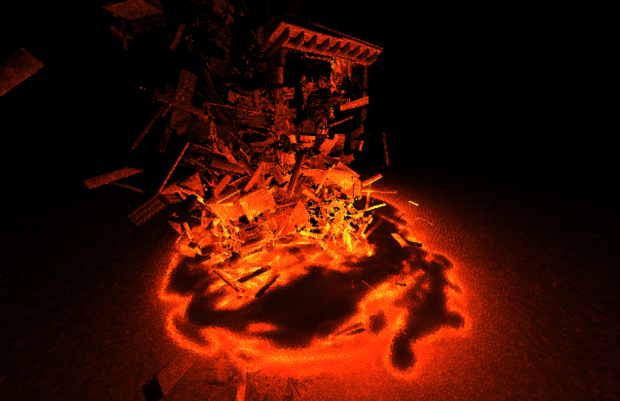You have no items in your cart. Want to get some nice things?
Go shopping
Litro: You’re a self-taught coder and game designer. How did you develop the programming skills to support your artistic practice?
RR: I’ve been coding and using command line since I was about five, it’s something I’ve always loved…. Some of my first drawings were made on top of spooled dot-matrix printers.
There is this misconception that coding is something you have to learn it in a structured setting, but the reality is that all programmers are self-taught because the sands are always shifting.
Litro: Why has immersion become so important to your work, e.g. in Stalking the Trace?
RR: Immersion felt salient for Stalking the Trace because that show is about control and agency.
I wanted a space where I could overtake the viewer and pull back when I needed to.
Litro: How do you see immersion relating to absence in the work and viewer?
RR: I suppose in the aspect of “immersion” being an all-consuming state, that’s an attractive endgame. It’s something I’m seeking in the work I want to make and the other art I’m attracted to.
Of course, I don’t mean immersion in any technical sense (it doesn’t need to be installation or virtual reality). I find myself in that state in front of paintings I love. The rapture.
It does have to do with threading absence and presence and that’s probably why my virtual reality works hinge on the user as the moderator – or giving them agency to drive or change a piece.
Litro: Can you talk me through your process, inspirations – Michelangelo Antonioni’s Zabriskie Point is an inspiration, are there any others? – and what is that process from seeing Zabriskie Point and producing The Sky is a Gap.
RR: When I cite outside material, it’s because it ends up acting like a synecdoche. For example, with Zabriskie Point, Antonioni wanted to initially end the film with a plane skywriting “Fuck You, America”, the producers didn’t want to pay for that, but that was the message he wanted to send. He charged that high-spectacle explosion scene with that type of energy, but he gets lost in the beauty of it – that’s the type of intent I wanted to charge that piece with.
Litro: Has this process changed over time?
RR: Of course, but it really depends on what the work is or what I feel like it needs.
Litro: It must be disorienting to constantly alternate between the physical and virtual world. Do you find this affecting your work?
RR: It definitely affects my work but it’s also where my work comes from. The reason I highlight entropy in my practice so often is because it’s about exchange and state-changes – and that feels very true to how we move through reality today. There is a material to the uncanniness of that… We’re constantly shifting through state-changes, siphoning off from one psychological space to another and back again.
Litro: Can VR experiences create deeper empathy towards appreciating art / storytelling – creating more human connections?
RR: I think VR has as much power to create empathy as any medium does. It depends how emotionally open someone is while having a screen 3 inches from their face; it’s certainly immersive and extremely powerful, if done well, but it’s not for everyone.
I don’t think VR as it stands is a medium for story-telling, but I do think it’s a great medium for working with perception. For me, I’ve always been attracted to VR as logic-based installation that can work with the root level substances of being a human being.
Litro: Do you think audiences that engage with your work feel closer to it, because VR makes them part of it and not apart from it?
RR: For my VR works? Maybe? That is, if they like VR, but sometimes you have to break a few eggs to make an omelet.
Litro: What does the future hold for VR?
RR: Right now, we’re in a nice place because our devices are still separate from us. We’ve always used peripherals to extend what it means to be human. It used to be other organisms: i.e horses to extend our range of motion, dogs to extend our senses, canaries for air quality. Now we have digital technologies as peripherals for our cognition – i.e. our phones for memory and navigation.
For VR in its current incarnation, that same thing is true – it still feels separate and very clunky. Escapism can be therapeutic up until it tips into addiction and I hope that VR continues to move slowly because we need each other. Future speaking in terms of forecasting trending our devices will likely start to become a part of us – (AR/VR included) and technology will move off of electricity and into biotechnology.
Litro: how do you define “immersion” or “immersive experiences”?
RR: Gesamtkunstwerk.
Litro: What do you hope audiences will get from your work?
RR: Live laugh love :’)





